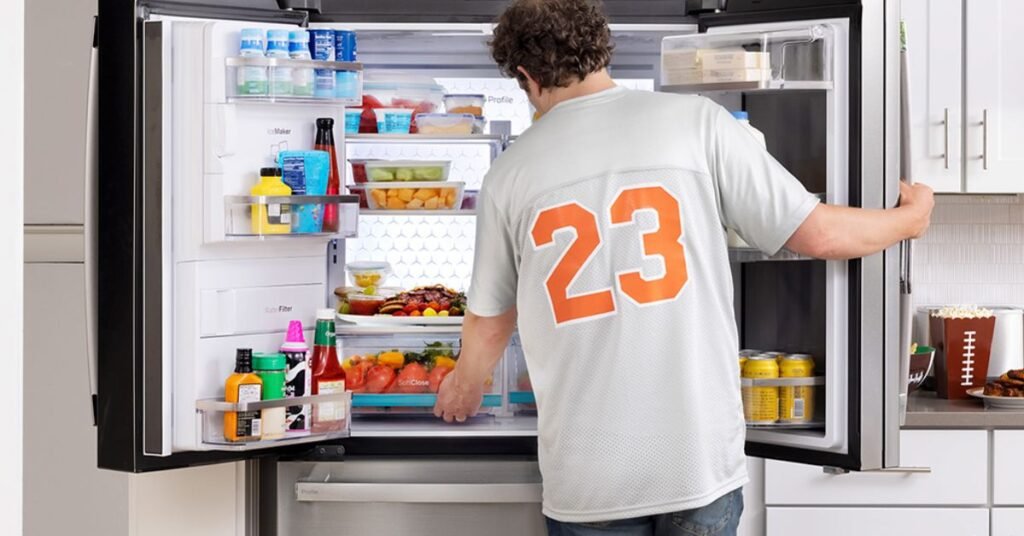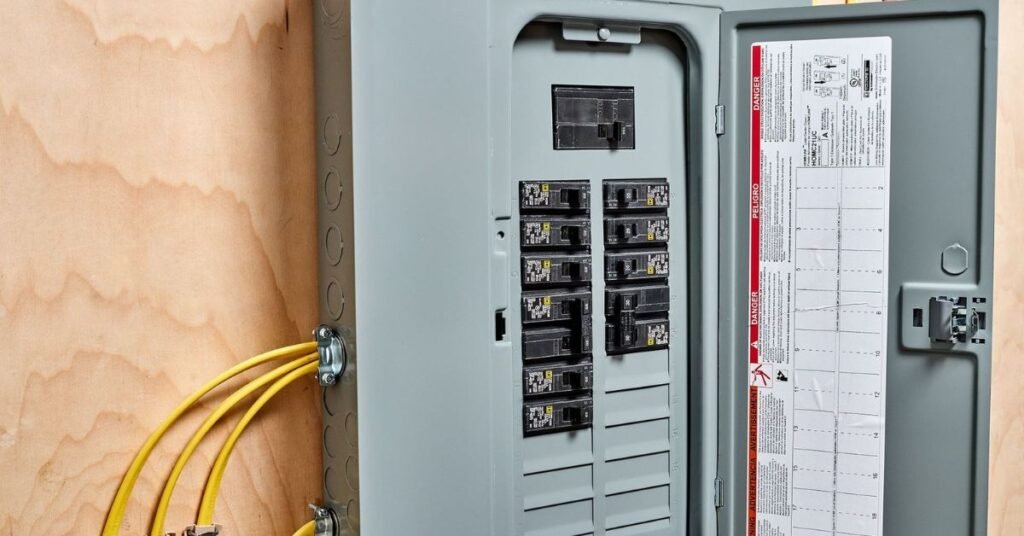In modern-day kitchens, the microwave and refrigerator are critical domestic devices for comfort and food protection. However, a commonplace question that arises is whether or not one’s home gadget can be the same electric-powered circuit.
It would help if you did not use a microwave and refrigerator on an identical circuit. The NEC calls for everlasting microwave devices to have a committed circuit.
This article delves into the intricacies of taking walks on microwave and refrigerator on the equal circuit, exploring the capacity of worrying situations and imparting practical solutions to ensure a secure and inexperienced kitchen setup.
Electrical Circuits: A Brief Overview:
Before addressing the number one query, it’s vital to understand the fundamentals of electrical circuits. In a circle of relatives, the electric device is broken into circuits, each protected through a circuit breaker. These circuits are designed to address a selected quantity of electrical load, measured in amperes (amps). The tremendous family voltage in many countries, such as the United States, is 100 and 20 volts. A regular circuit in a domestic is rated for 15 or 20 amps.
Understanding Surge Currents:
Surge currents, especially from home machines like refrigerators, can cause brief spikes in electric-powered calls. These surges are generally short. However, they may be huge. An appropriate exercise is to set up surge protectors in your house to defend sensitive digital gadgets from the one’s spikes.
Power Requirements of Microwaves and Refrigerators:
Microwaves and refrigerators are each excessive-power home equipment.
1. Microwaves:
Most microwaves use between 800 to 1500 watts of force. Considering that power (in watts) is determined by duplicating the voltage (120V) through the current day (amps), a microwave drawing 1500 watts utilizes around 12.5 amps (1500W ÷ 120V = 12.5A).
2. Refrigerators:

Modern fridges typically use 600 to 800 watts at the same time as on foot. That translates to about five to 7 amps (800W ÷ 120V = 6.67A). However, refrigerators require a higher surge current-day at startup, which may quickly exceed 15 amps.
Also Read: What Stays Hot Even In The Refrigerator?-Complete Guide
Potential Issues with Shared Circuits:
Combining one’s appliances on a single circuit can motivate several issues:
1. Circuit Overload:
The combined strolling cutting-edge-day of a microwave and a refrigerator can, without problem, exceed the functionality of a famous 15-amp circuit. When every domestic gadget performs simultaneously, the current-day draw can adventure the circuit breaker, inflicting strength outages.
2. Nuisance Tripping:
The refrigerator’s startup surge can journey the breaker if the microwave strolls concurrently, crucial to common interruptions.
3. Overheating and Fire Hazards:
Persistent circuit overloading can result in overheating of wires, posing a significant fireplace hazard.
The Role of Circuit Breakers:
Circuit breakers play a vital role in defending your private home’s electric-powered system. They are designed to journey and reduce off energy even as the circuit is overloaded, preventing harm and reducing fireside threat. Understanding how your circuit breakers paint and ensuring they may be nicely rated for your house gadget is vital for kitchen safety.
Electrical Code and Safety Considerations:
According to the National Electrical Code (NEC) within the United States, kitchen circuits venture to unique pointers to ensure safety. Key factors encompass:
1. Dedicated Circuits:

Major home devices like microwaves and fridges need to have devoted circuits to prevent overloading ideally. A devoted circuit provides material power to unmarried equipment.
2. AFCI and GFCI Protection:
Modern electric powered codes regularly require Arc Fault Circuit Interrupter (AFCI) and Ground Fault Circuit Interrupter (GFCI) safety for kitchen circuits to beautify safety.
Also Read: Can Refrigerators Get Wet?-What You Should Know
Practical Solutions for Your Kitchen:
If your microwave and refrigerator are currently at the same circuit and you’re experiencing troubles, consider the answers:
1. Install Dedicated Circuits:
The most straightforward answer is to install devoted circuits for each microwave and the fridge. That ensures that each piece of equipment has enough power without the threat of overloading the circuit. Hiring a licensed electrician is crucial for this assignment to ensure compliance with close-by electric-powered codes and requirements.
2. Assess and Upgrade Circuit Capacity:

In some instances, upgrading the winning circuit to a better functionality (e.g., from 15 amps to 20 amps) could remedy the hassle. However, this is most feasible if the circuit wiring can handle the superior load. A professional assessment is essential before making such upgrades.
3. Use Energy-Efficient Appliances:
Modern power-green domestic devices devour an excellent but less strength, reducing the opportunity to overload a circuit. If your microwave or fridge is antique, consider converting it with a more excellent green version. Look for an ENERGY STAR-rated home system that assures decreased strength intake.
4. Stagger Appliance Usage:
If installing devoted circuits isn’t viable immediately, a sensible workaround is to stagger using the microwave and fridge. Avoid on foot the microwave at the same time due to the fact the refrigerator is in all likelihood to be biking on and rancid. That can help manipulate the overall load on the circuit.
5. Regular Maintenance and Inspection:
Regularly reading and maintaining your kitchen home machine and electric-powered devices can prevent capability troubles. Ensure that every connection is sturdy and there aren’t any signs of wear, tear, or damage. Periodic inspections using a certified electrician can help select out and mitigate dangers.
The Impact of Kitchen Layout:
The format of your kitchen also has how electric-powered circuits are disbursed. When making plans or reworking a kitchen, remember the place of domestic tools and the proximity to power belongings. Strategic placement can assist in distributing electric-powered power hundreds extra lightly over a couple of circuits.
Also Read: How Long Will Tamales Keep In The Refrigerator?-Complete Guide
FAQ’s:
1. Is it solid to locate a microwave after a fridge?
Placing your microwave next to a fridge is also a lousy idea, particularly if your refrigerator has doors or one door that opens within the microwave route.
2. Does a microwave need a committed circuit?
Typical microwaves need a devoted 100 twenty-volt circuit with a 20-amp breaker to perform safely.
3. Does my fridge need to be on a separate circuit?
Yes. In maximum conditions, a refrigerator will need its very own circuit.
4. Can I position a microwave on top of a fridge?
Electronic domestic devices and gadgets, together with toasters, microwaves, or radios, should no longer be stored on top of the fridge because the vibrations from the compressor can damage their sensitive components over time.
Conclusion:
Running a microwave and refrigerator at an equal circuit can pose severe conditions due to the immoderate strength demands of these home devices. To ensure a steady and green kitchen, it’s crucial to put in dedicated circuits for essential home gadgets.
Regular protection, upgrading to energy-green fashions, and statistics of your own home’s electric-powered machine are critical steps in preventing overloads and ensuring electric- powered safety. By taking these measures, you can revel in the benefit of modern kitchen domestic machines without compromising on safety.

